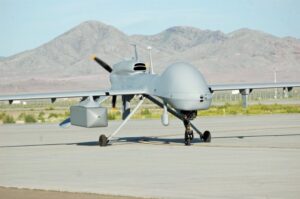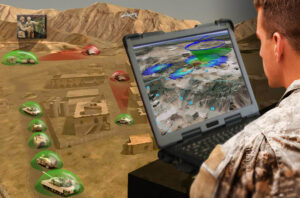1st-Ever Electronic Warfare Strategy Headed For SecDef’s Desk
Posted on

An Air Force EC-130H Compass Call electronic warfare aircraft in Afghanistan.
WASHINGTON: With Russian jammers blasting Ukrainian radios off the air, the US Defense Department’s racing to regain its edge in electronic warfare. But there’s been no comprehensive strategy to guide all the armed services’ efforts — until now.
The first Defense Department-wide electronic warfare strategy is “basically finished” and headed to Secretary Ashton Carter’s desk for his signature, along with major plus-ups to EW spending for 2018, Pentagon official Bill Conley said Thursday afternoon. What’s more, defense contractors, foreign allies, and perhaps even the press are going to get to see it. While the sensitive specifics will be in two secret annexes — an implementation plan and a “roadmap” of desired future capabilities — the broad strategy itself will be unclassified.
“The base strategy document is very deliberately an unclassified document,” Conley told the Association of Old Crows EW conference, “and the reason for that is it allows us to share it broadly on the industry side, with our partners, with our allies, and say this, no kidding, (is) where we are going with our investments into electronic warfare.”

The Army’s NERO program tested a converted Navy jammer on a Grey Eagle drone, the Army version of the Predator.
“It’s way too easy to write these beautiful classified documents which somebody can show you for about three minutes in their office — and then they take it back and you never see it again,” continued Conley, who’s deputy director for electronic warfare in the Pentagon’s acquisition office. Such a sneak peek “doesn’t do you a whole lot of good” if you’re trying to ensure your country’s or your company’s own investments align well with the US military’s.
Besides the unclassified high-level strategy, Conley is considering industry day-type events to bring in defense contractors with appropriate clearances for classified, detailed briefings, such as the latest intelligence on threats.
While Conley couldn’t provide many details yet on the strategy, he did hit some high notes. As might be expected from its unclassified nature, the document puts a high value on sharing information with industry and allies: If industry develops the wrong technologies, or allies rely on frequencies we plan to jam, the Pentagon’s EW plans won’t get very far.
The strategy also emphasizes proactively seeking new technologies and the new tactical opportunities they create, rather than just reacting to whatever the latest threat is. (The roadmap specifying what future capabilities are desired will be highly classified). It also emphasizes “cost imposition” approaches that are relatively cheap for the US to implement but expensive for adversaries to counter. It calls for better modeling and simulation of the complex effects of electronic warfare, which are nowhere near as well understand as the blast effects of missiles and bombs; predicting how signals propagate or get blocked in dense urban areas is a particularly tricky problem. The improved models would underlie both new visualization tools for commanders and their planning staffs, who often struggle to communicate what EW can actually do, and improved simulations for training.
The strategy does not settle the debate over whether the electromagnetic spectrum should be considered a “domain” of military operations alongside land, sea, air, space, and cyberspace, Conley said, though intensive study of that question is underway.

Electronic Warfare Planning & Management Tool (Army concept)
The strategy has been prepared in parallel to significant increases for EW programs in the 2018 budget request, Conley said. (Those figures won’t be released until February at the earliest). Admittedly, these increases don’t add to the $2 billion a year plus-up the Defense Science Board said was necessary in a landmark 2014 report on EW shortfalls. But the Department’s electronic warfare community just isn’t big enough to absorb that kind of increase all at once, said Conley — “everything in EW (put together) is a smaller program than F-35” — so Pentagon leaders are aiming for “five to 10 percent growth, year in, year out.”
Both the money and the strategy are the handiwork of the Electronic Warfare Executive Committee. The EW EXCOM was created in March 2015 by Deputy Secretary Bob Work, the Pentagon’s leading patron of EW. It’s co-chaired by the Pentagon’s acquisition chief, Frank Kendal, and the tech-savvy Vice-Chairman of the Joint Chiefs of Staff, Gen. Paul Selva. Conley himself co-chairs the EXCOM’s secretariat.
Breaking Defense has covered the EXCOM since it was announced, and we even ended up being a small part of the story. “Sydney, a year ago, you posed the question (at the AOC conference): ‘CSBA said you guys needed a department-wide EW strategy…What’s going on with that?'” Conley recounted. “I said, ‘we’re working on it, we (had) agreed a week earlier in the EW EXCOM that we need to do that.'”
“That (news) actually made it all the way up to DepSecDef (Work), who said, ‘I want to know about this strategy,'” Conley said, “which means the deputy was arguably informed well before he otherwise would have been.”
Subscribe to our newsletter
Promotions, new products and sales. Directly to your inbox.
